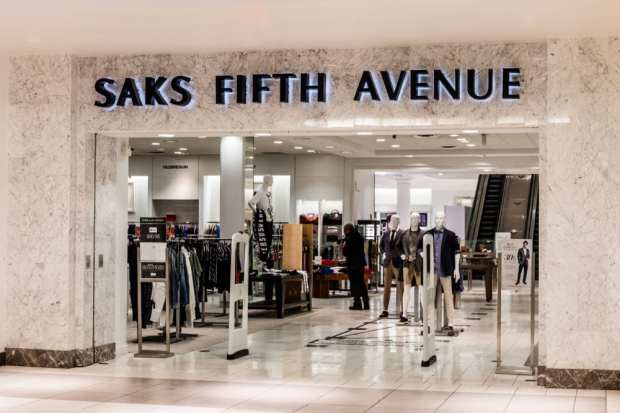Luxury Retail Is Changing — And Saks Shows The Way For 2020

Barney’s has given way to Saks Fifth Avenue, directing shoppers to the latter’s sites in these last days of the year, one of the latest changes in luxury retail in 2019.
“The luxury retailer has stopped eCommerce transactions on its Barneys.com and Barneyswarehouse.com websites. The sites now redirect to Saksfifthavenue.com and Saksoff5th.com, respectively. In-store closeout sales are expected to continue through February, led by B. Riley Financial Inc.,” reads a report from Footwear News. “Authentic Brands Group closed the deal to purchase Barneys New York in early November, nearly three months after Barneys filed for Chapter 11 bankruptcy. When ABG was announced as Barneys’ owner, the company said Saks Fifth Avenue would serve as a partner for both in-store and eCommerce transactions – so the shutdown of Barneys’ sites is as expected.”
Barneys is far from alone in this “retail apocalypse,” but the renowned brand has bigger reputational issues than most stores, noted New York Times fashion critic Vanessa Friedman, according to Business Insider.
“[Barneys] was also unabashedly elitist, proudly exclusionary – you got it or you didn’t, and if you didn’t, that was your problem, not theirs – and imbued with an arrogance that, at a certain point, began to chafe,” Friedman wrote after the September bankruptcy announcement.
The company has a nearly century-long history and has enjoyed a position of prestige as a provider of the finest luxury apparel. However, Barneys has not been immune to the same market conditions that sent Sears and Kmart into bankruptcy. It’s also dealing with a massive rent hike at its headquarters, which sent it frantically searching for a buyer. Rent at its Madison Avenue flagship increased to roughly $30 million in January, up from approximately $16 million.
Luxury Consolidation
Other changes are also happening in the luxury retail space.
Around Thanksgiving, news emerged that LVMH had reached an arrangement to purchase Tiffany & Co. for $16.2 billion or $135 a share in cash. The boards of Tiffany and LVMH approved the deal, and the transaction is forecasted to close in the middle of next year, subject to regulatory approvals and approval from Tiffany’s shareholders.
Bernard Arnault, LVMH CEO, said the firm is looking “to develop this jewel with the same dedication and commitment that we have applied to each and every one of our Maisons. We will be proud to have Tiffany sit alongside our iconic brands.”
LVMH has amassed a sizable luxury brand portfolio in various retail sectors, from perfume to fashion. Its famous brands include Dom Perignon, Moët & Chandon, Louis Vuitton and Givenchy.
In October, news surfaced that Tiffany & Co. had received an offer from LVMH Moët Hennessy Louis Vuitton, with jewelry among the fastest-growing businesses in the luxury sector. At the time, it was reported that the French firm sent the company’s officials a letter that outlined an all-cash, $120-per-share takeover bid that would value the firm at almost $14.5 billion.
Last year, the global jewelry market rose 7 percent and was worth roughly €18 billion. Tiffany is said to be one of the biggest jewelers in the world, alongside LVMH-owned Bulgari and Cartier.
Luxury IPO
And that’s not all. In its U.S. initial public offering (IPO) earlier this year, eCommerce luxury reseller The RealReal Inc. has notched $300 million. The company priced its shares above a target range, having sold 15 million shares for $20 apiece following their marketing at $17 to $19. The offering was led by UBS Group AG, Credit Suisse Group AG and Bank of America Corp., per the filing. The RealReal reportedly has yet to generate a profit, even though Bloomberg noted “the market is intrigued by its growth.” Last year, the company had revenue of $207 million but lost $76 million, per the U.S. Securities and Exchange Commission (SEC), as cited by the report.
IBISWorld Pty Ltd. data indicates that used footwear, clothing and accessories represent a $10 billion market in the United States. At the same time, interest from young consumers who are conscious about sustainability has provided an opportunity for the industry.
You can bet on more luxury retail changes in the year to come.
